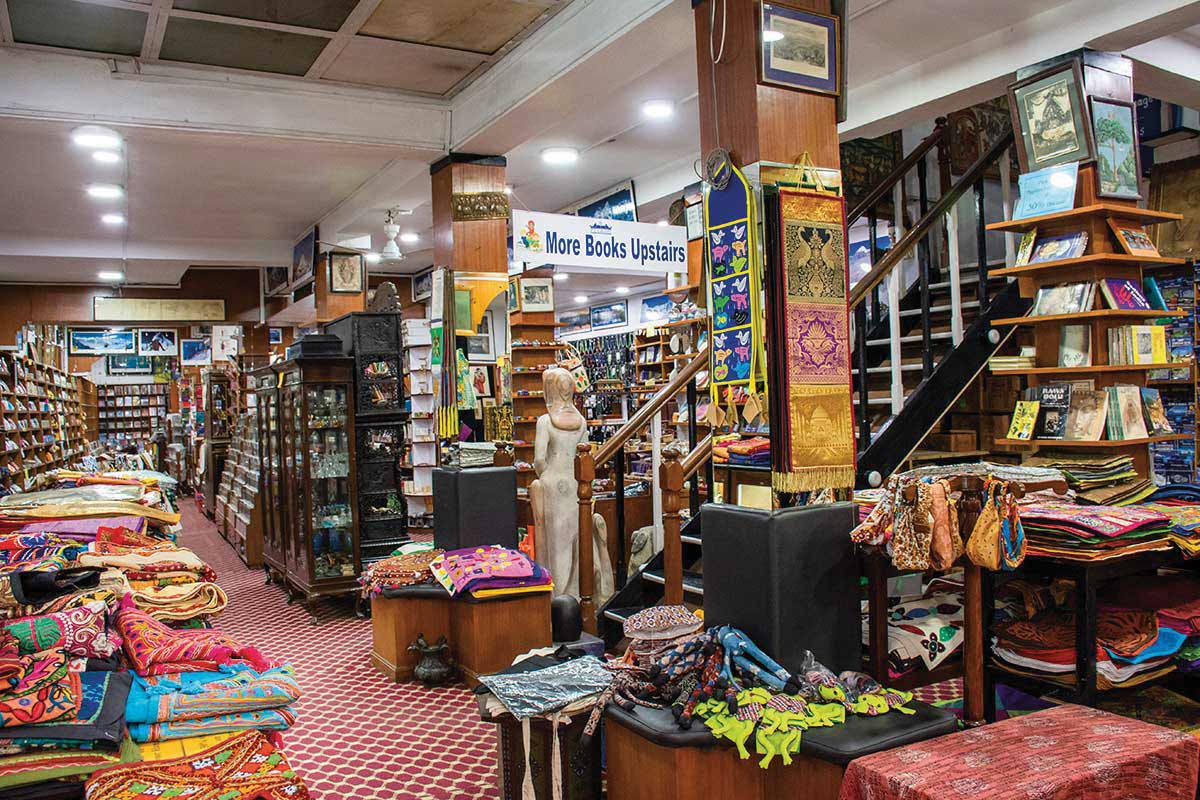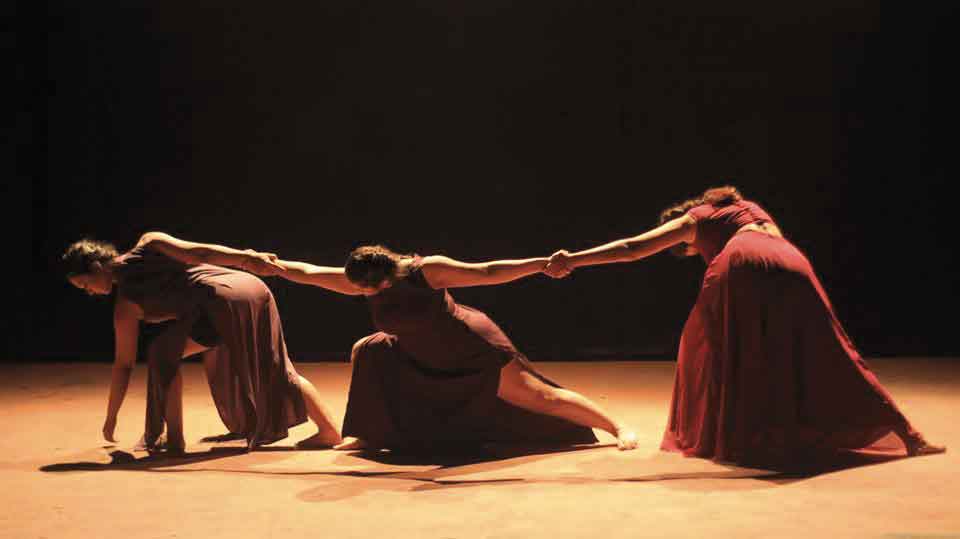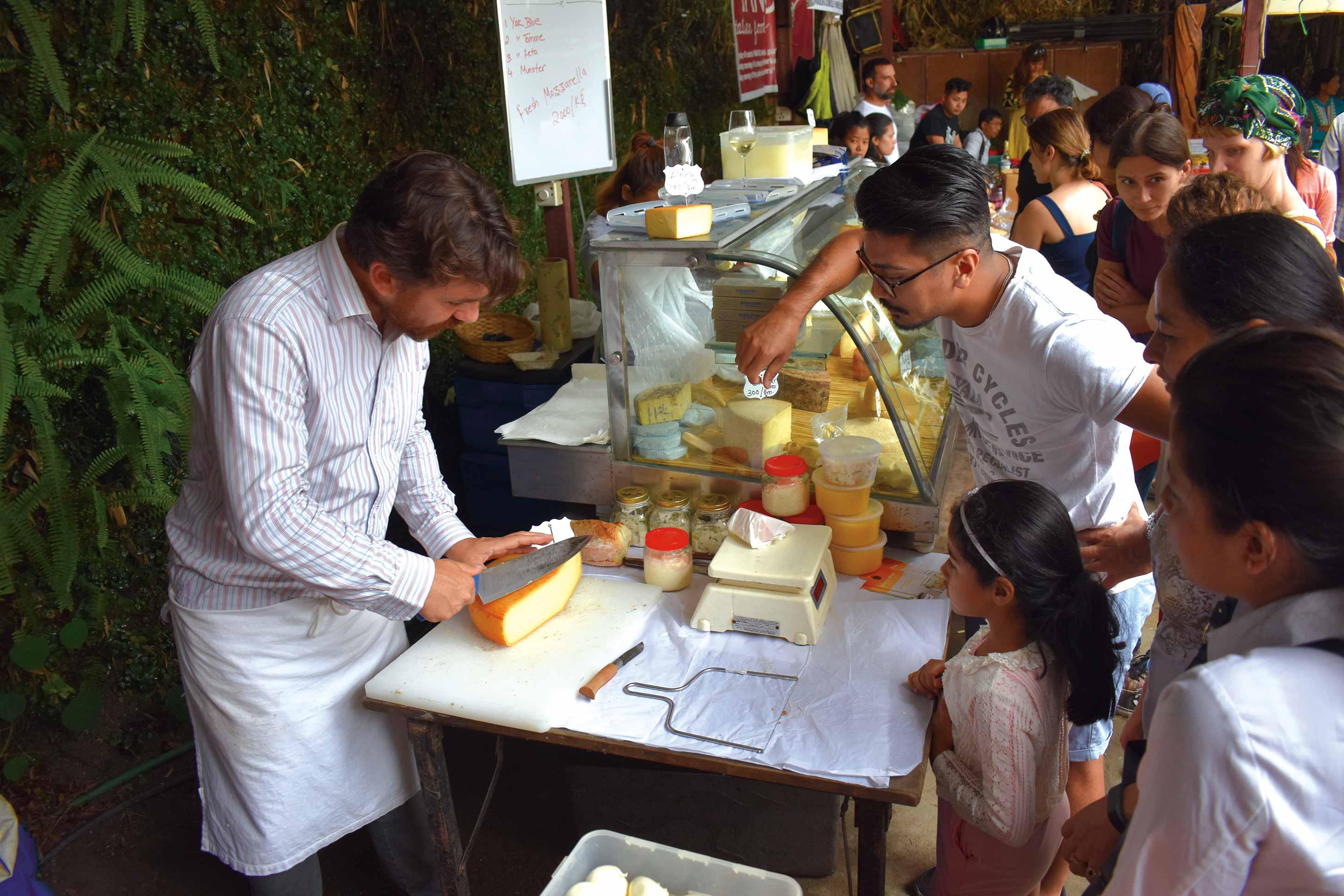If you were looking for souvenirs, where would you go? Thamel springs to mind. Walking along the streets of Thamel, one is oftenaccosted by hawkers selling anything from brocade purses to khukuris (the famous Gurkha knives that became known the world over during the two world wars). Buying anything in Thamel of course, calls for bargaining skills that you may already have, or need to acquire in a hurry. ‘Tourist prices’ as they are known are quite inflated. But bargaining comes naturally to most people. Tourists are seen vigorously haggling prices until satisfied, or they adamantly refuse to buy. The variety of souvenirs you can buy around Thamel is quite staggering, and making up your mind could prove to be tiresome.
 We sampled what looked traditional and what people are likely to carry off as souvenirs. Featuring everything available is neither practical nor would that make interesting reading. We watched a heavily built tourist being approached by a plump little girl, selling colorful brocade purses. They are quite attractive (the purses). Either out of necessity or out of sympathy for her physique, the man bought the whole lot without a second thought.
We sampled what looked traditional and what people are likely to carry off as souvenirs. Featuring everything available is neither practical nor would that make interesting reading. We watched a heavily built tourist being approached by a plump little girl, selling colorful brocade purses. They are quite attractive (the purses). Either out of necessity or out of sympathy for her physique, the man bought the whole lot without a second thought.
They sell for NRs. 100/- to 150/-. These girls are some of the most aggressive hawkers in Thamel, and being minors, they get a lot of sympathetic buyers. All the prices quoted here may vary from shop to shop.
Beads, Ceramics & Bones
Some objects that once came all the way from China are now being manufactured in Nepal. The chocolate colored miniature ceramic masks are made here, mixing powdered bone to give it that unique look. They are really very attractive and while we were checking these out, a foreigner bought a few of them. She had her guide to help her bargain. They can be had for about NRs 150/- to 300/-. When it comes to beads, there are many impressive varieties. Colorful as they are, they also come in many shapes and sizes, besides the different stones they are made of. Their average price is NRs 100/-. Bone pendants are the other item of interest and seem to be gaining popularity as some shops concentrate on just selling these pendants. They can cost anything from NRs 60/- to 250/- depending on design.
Glass Objects
What are new in the market are smoking pipes made of glass. They are quite colorful and reportedly made in the Rato Pul area in Kathmandu. There are two types: The water pipe and the ordinary pipe. The former has a bulb to contain water, through which the smoke is filtered. The water pipes are sold for NRs 700/- to 1000/- while the ordinary pipes sell for NRs 200/- to 400/-. Simple, but beautiful glass lockets are also available along with the pipes.
Metal Objects
Immensely popular among tourists are the singing bowls. They come in all sizes but basically of the same shape. Of course they do not sing, but if a wooden stick (sold along with the bowl) is slowly pushed round and round pressing against the wall of the bowl, a fascinating continuous ringing sound emanates that is quite haunting. Books have been written about the singing bowls, and are available in Thamel.
These days we rarely see little girls selling bracelets as they used to do in the past. But you do get bracelets in the roadside shops. They make handsome gifts and come in basically two varieties: with or without stones. Made of silver, copper, bronze or white metal (some are of mixed metal), they cost between NRs 70/- to 250/-. Also available are quite well finished replicas of prayer wheels (manays) that are actually about half the size of a real one. You could of course, buy a real one for NRs.850/-. The replicas are sold for NRs 100/- to 700/- depending on their quality. Also on sale are some unusual, well-designed bells selling for NRs 400/- to 900/-.
A valued gift one could give would be a khukuri, the world famous Gurkha knife. Mostly made in the Dharan/Dhankuta areas, they come in great varieties. The tiniest ones are those that can be worn on a jacket or as a tiepin. The largest are about a meter in length and can be really heavy. The choices are many: plain or with engravings. They also come in all shapes and sizes. Then there are various kinds of sheaths: black or red, with metal decorations or without. The red ones usually have decorations in silver. The smaller ones are priced at NRs 250/-, while the normal handy khukuris (the size used by Gurkha soldiers) can cost up to NRs 3,500/-. However, if a generous amount of silver has been used in the sheath, it could cost up to NRs 8,500/-. The very large khukuris, up to a meter in length sell for NRs 6000/-.
Rice Paper Products
Quite popular among tourists are also writing material that are made of rice paper (lokta in Nepali). They are attractive, and in recent years this industry has seen much innovation. Today, you can find lampshades, photo albums, wallpaper and even handbags. However, what sell a lot are the cultural calendars, notebooks, diary, gift box and loose paper.
Musical Instruments
Something you can buy off the streets is the Nepali stringed instrument known as sarangi. With a body of carved wood and animal skin stretched over the hole, it is strung with gut strings. Sarangis are sold by Gandharvas, a clan that has for centuries been traditionally playing these instruments for a living. Called Gandarvas, they are traveling minstrels and many carry on the tradition even today, especially in the villages; singing about events, trends and other social issues. Some of these instruments are exquisitely carved and can cost quite a bit. These Gandarvas are usually skilled at playing the sarangi. It is not only played like a violin with a bow, but sometimes in the middle of a song, they will stop and start plucking with the fingers of one hand while keeping a beat going with the bow; a very interesting technique. You may come across Nar Bahadur Gandarva at the three-way crossing in Thamel. He showed us a beautifully carved piece, which he said could fetch from NRs 2000/- to NRs 3000/-.
You can actually observe a maadal being made right in front of your eyes. If you can find the little gulley (a tiny alley) that goes from Thamel (near Café Mitra) to Jyatha, you will find this shop/workshop that makes and sells maadals. They are wonderful percussion instruments made of hollowed out wood with animal skin stretched over both ends. Played with both hands, the maadal is the predominant sound of folk songs and a master drummer can play many complicated beats on it. They come basically in two sizes; a normal size and one that’s about half that size.The small ones can be had for NRs 400/- to 500/- while the bigger maadal costs up to NRs 800/-. They are great as souvenirs, since you can actually play them at home.
Thangkas
Something really worth having and of great cultural value are the thangkas. These religious scroll paintings are in great demand and can command quite a sum if meticulously made, with intricate details. A good thangka painter is a highly skilled artist, as these paintings are not spontaneous creations, but follow rigid specifications laid down in detail in the time-honored liturgy. The minute details in a good thangka are fascinating, and the fine work involved can only be appreciated with a magnifying glass in hand. This is also a means to differentiate good workmanship with the mediocre. Thangkas are still used for rituals as well as for meditation by Buddhists. The gold powder used as paint gives added value. A very good thangka can cost up to NRs 200,000/-. Antique thangkas have become rare, so many are artificially aged with smoke and grime. Government regulations forbid the export of objects more than a hundred years old.
Carpets
Carpet weaving arrived with the Tibetans who left their homeland to enter Nepal as refugees. With the assistance of donors, they started a flourishing carpet industry in this country. In the beginning there were only the traditional designs, but with growing demand for more modern patterns, carpets with abstract designs have also become a common feature. Carpets too come in many sizes as well as varying quality; some merely for decoration, while others are made especially for meditating purposes. The most common however, are those made for flooring, and runners for stairways. Prices range from a cheap NRs 500/- to 60,000/-.
Miscellaneous
What especially catches your eye while shopping around Thamel are the colorful puppets with papier mache as faces. (Anywhere from NRs 200/- to NRs 800/-).
A Swiss gentleman invented the wooden tie and set up a factory in Bhaktapur. Exports were his mainstay, but these ties can be bought in Thamel as well. They are not as stiff as one would expect, as they comprise of little pieces of varnished wood, held together by an elastic string. They can be had for NRs 400/- to 500/-.
Fancy T-shirts with innovative slogans are instant sellers as many tourists are seen wearing these local products. Stuff like, “No change money, No hashish, No rickshaw, No sight-seeing, No problem,” were quite a rage at one time. Embroidered T-shirts sell well, especially those with designs related to trekking and mountaineering, and custom designs are easy to make around Thamel. They sell for NRs 150/- to 300/-.
Souvenir shopping however, should not be limited to the Thamel area. The Basantapur square is a fabulous place to hunt for souvenirs. The open bazaar here has much to offer in the form of trinkets, statuettes, masks, beads, antiques and countless other objects that are of great value as souvenirs. Freak Street further down, has more. Happy hunting!










